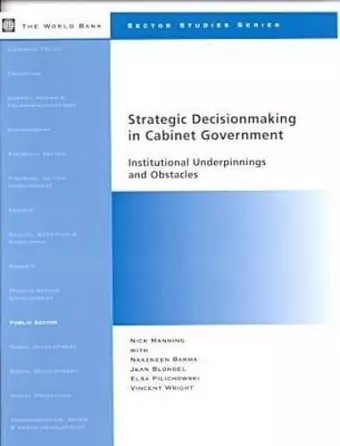Strategic Decisionmaking in Cabinet Government
Institutional Underpinnings and Obstacles
Format:Paperback
Publisher:World Bank Publications
Published:30th Nov '99
Currently unavailable, and unfortunately no date known when it will be back

The style and membership of cabinets vary in every country. The heads of democratic governments form a cabinet for three principal reasons: 1. The threat that the legislature will significantly amend the government's program as expressed in the budget proposals made by the executive. 2. The threat of dismissal between elections. 3. The risk that the executive will be seen by the public as having departed from a previous tradition of cabinet government and judged poorly as a result. 'Strategic Decision making in Cabinet Government' shows that cabinet government is a rational response to these risks and sets out the institutional arrangements that make the cabinet a binding device. This report recognises the significance of the budget process for collective decision making, but moves beyond the simplistic assumption that trade offs in cabinet government can only be made by reallocating the budget. It supports practical approaches for assessing the strength of cabinet decision making arrangements and for identifying practical steps to improve the prospect that decisions will be collectively binding.
Collective cabinet decision making provides the institutional mechanism by which many governments prioritise their policies and guard against unpredictable policy reversals." —Mansood Ahmed, Vice President, Poverty Reduction and Economic Management Network, The World Bank
ISBN: 9780821346273
Dimensions: unknown
Weight: 152g
56 pages